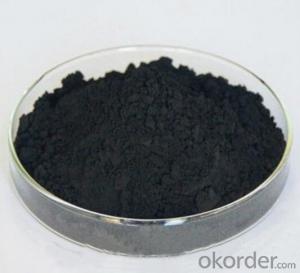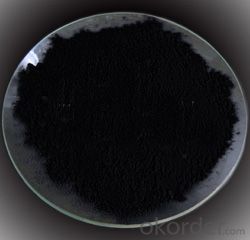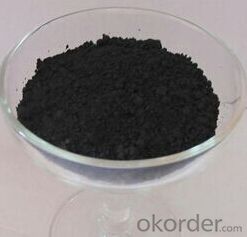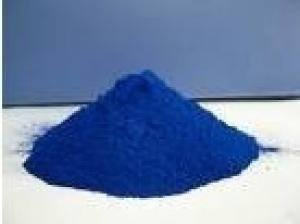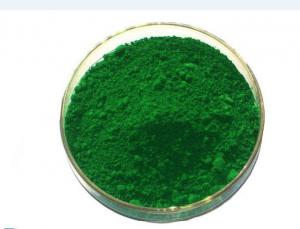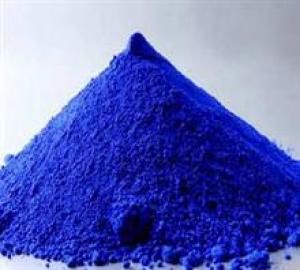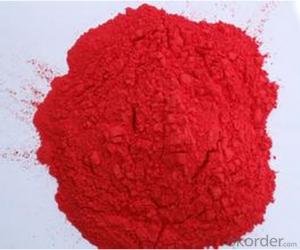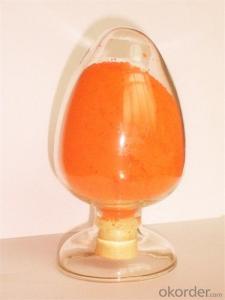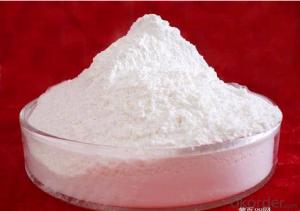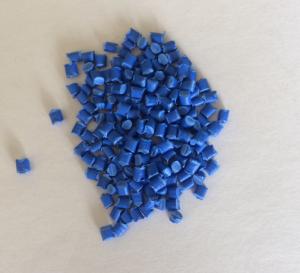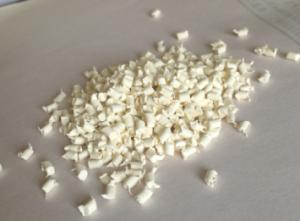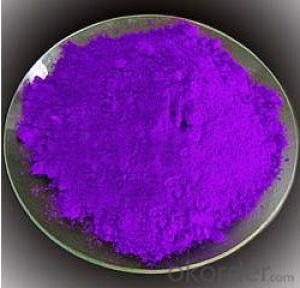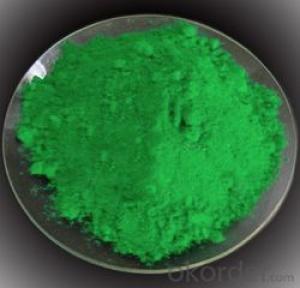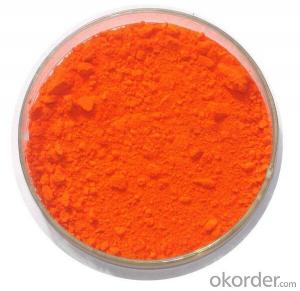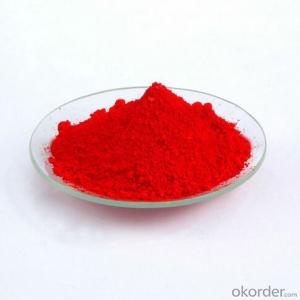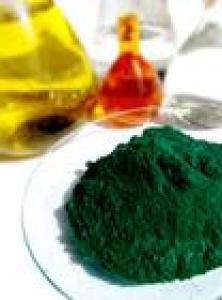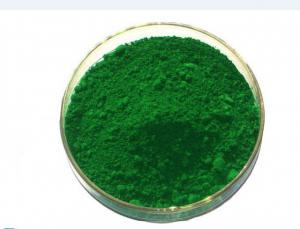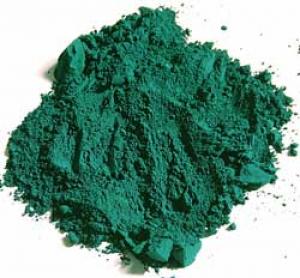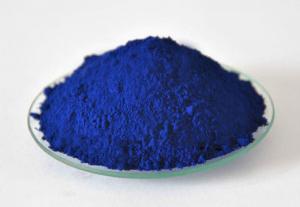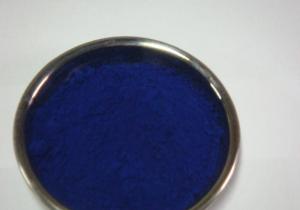Copper Chromite Black Pigment Organic Pigment Powder
- Loading Port:
- Tianjin
- Payment Terms:
- TT OR LC
- Min Order Qty:
- 500 kg
- Supply Capability:
- 6000000 kg/month
OKorder Service Pledge
OKorder Financial Service
You Might Also Like
Black Specifications
Black Paint Pigment-Copper Chromite Black Spinel(P.Bk.28)
High-temperature resistance
Non-toxic pigment
High light fastnes
Black Product Information:
Chemical Name: Copper Chromite Black Spinel
Chemical Composition: Cu/Cr/Fe Oxide
Color Index Name: Pigment Black 28 / P. Blk.28
Color Index Number: 77428
CAS Number: 68186-91-4
Physical Form: Black Powder
Crystal Pattern: Spinel Pattern
Black Product Characteristics:
Pigment Black 28 is one kinds of environmental protection pigments, which is internationally recognized as non-toxic pigments.It has excellent heat resistance, weather resistance, lightfastness, chemical resistance, as well as good hiding power.
Black Main Technical Data:
Heat Resistance | ≤1000°C |
Light Resistance (Grade 1-8) | 8 |
Weather Resistance (Grade 1-5) | 5 |
Acid Resistance (Grade 1-5) | 5 |
Alkali Resistance (Grade 1-5) | 5 |
Oil Absorption | 18-22g/100g |
Density | 4.8-5.6 g/cm3 |
PH | 7-9 |
Mean Particle Size | ≤1.5 µm |
Black Packaging & Delivery
Packing Detail: Per 25 kgs pack in one cardboard drum and inner lined with secure plastic bag.
Delivery Detail: Within 15~20 days after 30% advanced.
Black Advantages:
High-temperature resistance, High light fastness resistance, Acid resistance,
Alkali resistance, Weather resistance, Easy to disperse, Non-migration, Non-bleeding.
Black Regulations:
Compliant to EU RoHS 2002/95/EC
Compliant to EN71Part 3:1994 (A1:2000/AC2002)
Compliant to US FDA 21 CFR 177.1520
Compliant to ASTM F963-08 (Clause 4.3.5)
Compliant to REACH
- Q: Why do plants contain so many pigments?
- Chlorophyll is the respond and here is why - this pigment provides flowers their relative eco-friendly shade because of the fact flowers undergo photosynthesis to furnish themselves with glucose for capacity. in this technique, flowers soak up photograph voltaic capacity from the sunlight. Chlorophyll has a eco-friendly pigment for the reason that's the pigment that attracts photograph voltaic capacity the main effectively. consequently offering the plant with greater photograph voltaic capacity, which would be converted into chemical or warmth capacity by way of cellular respiratory, yet that's an entire distinctive tale.
- Q: how are pigments classified?
- Plant pigments are classified like this.green colour pigment chlorophyll,yellow coloured pigments xanthophyll, orange red carotenoids and anthocyanines.OTHER than green are called carotenoids If green pigments are present in plastids they are called chloroplasts Y ellow pigemented plastids are called chromoplasts colourless plastids are called leucoplasts and they store starches and food materials.
- Q: What does pigment mean?
- The natural coloring matter
- Q: i love makeup so mucch im like addicted...lol but the only thing is that i only buy that department or drug store brands cause i cannot afford high quality brands. the one that i buy are good for me,,but anyways i was wondering what the heck is mac eyepigment,,what is the diffrence between eyeshow and pigment? pleas help thank u,,,oh yeah and what does it look,like on the eyes?
- a mac pigment is a highly concentrated loose eyeshadow just a little will give u alot of color as opposed to a regular eyeshadow which isn't as vibrant or pigmented to give you a visual, you know when you put on eyeshadow, you have to apply it a few times to see some decent color? .. with mac pigments its so concentrated that in the first stroke you can see the colour as it is in the pot. you can even use it as eyeliner
- Q: Please help me answer these Genetics problems. These are the problems that was assigned in the previous exams, but the professor doesn't provide the answer keys or a review session to go over these.Pigment in the mouse is produced only when the C allele is present. Individuals of the cc genotype have no color. if color is present, it may be determined by the A, a alleles. AA or Aa results in the agouti color, while aa results in the black color. In 3 crosses between agouti females whose genotypes are unknowns and males of the aacc genotype, the following phenotypic ratios were obtained. Female 1: 8 agouti 8 colorlessFemale 2: 4 agouti 5 black 10 colorless
- interior the 1st bypass AACC x aacc, discern a million will produce all AC gametes and discern 2 ac. Your F1 will all be AaCc. As all have the C allele they are going to be pigmented and as they're Aa they're going to all be agouti. Your F1 bypass is AaCc x AaCc. each and each discern can produce 4 gametes AC, Ac, aC, ac. To get all the genotypes you would be able to desire to entice a 4 x 4 Punnett sq.. each and each column and each and each row has between the 4 gametes in it and the cells comprise the blended genotypes. in case you count type up your genotypes you will discover 9 comprise the two A and C, those are agouti, 4 comprise cc, and all of those would be white regardless of the genotype at A, 3 comprise aa and C, those will all be black. So your phenotypic ratio would be 9:4:3 agouti: white: black the subsequent 3 crosses are all attempt crosses - you employ a recessive discern to artwork out the genotype of the different discern. a million. As lots of the offspring are colourless, you be attentive to that the two mothers and dads carry the c allele, as you pick cc for colourless mice. As there are no black mice, there is not any a allele interior the mum, as no aa offspring are produced. The bypass is AACc x aacc. woman gametes are AC or Ac and male gametes are all ac, offspring are the two AaCc or Aacc. 2. Is the opposite of bypass a million. There are black offspring so mom would desire to hold an a allele to furnish black mice, as there are no colourless ones, there is not any c allele interior the mum. you could write down the bypass and the F2 effect now. 3. This time all hues are produced, so the mum would desire to hold the two a and c alleles. Her genotype is AaCc, she would be able to offer 4 gametes as interior the 1st bypass and you will artwork out the resultant genotypes and phenotypes interior the F2.
- Q: Does albinism cause lack of ALL pigment, or just black pigment? Does this very on the species?
- Mammals and birds only have melanocytes (these produce varying amounts of brown or black pigment), so that's the only pigment that needs to be affected for them to display albinism. But other types of animals have multiple types of chromatophores. An albino snake, for example, would also need to have the cells that produce reds, yellows, and blues deactivated to appear white/colorless. For these animals to appear as albinos, all pigments would have to be affected.
- Q: what are the differences between colorfast and non colorfast pigments?
- I'm sure with enough research you will be able to find these answers and explanations in your text book. Or google them, maybe it will have pics to help describe if your more of a hands on learner. Good Luck.
- Q: hi:]i need the right order to apply skin pigments...
- Pigments are usually packaged in a finely milled loose powder form. After cleansing , toning and moisturizing,let the moisturizer absorb in the skin. Apply the skin pigments using a large compact powder brush/kabuki brush in a circular motion on face neck, then apply a second layer in a downward motion. Then use Evian water Mister to set the pigment. For eye pigments, put a thin layer of skin pigment first, then apply the eye pigment using a oval shaped dome brush
- Q: i was thinking of this all day long and then i thought of posting this question for you to help me sort it out
- Pigments are chemicals inside living things that absorb certain types of light. In plants, the pigment chlorophyll in leaves absorbs sunlight for photosynthesis to work, where the energy comes from. Chlorophyll absorbs all light except green, which is reflected. That's why most plants are green. NOT the other war around. :) :)
Send your message to us
Copper Chromite Black Pigment Organic Pigment Powder
- Loading Port:
- Tianjin
- Payment Terms:
- TT OR LC
- Min Order Qty:
- 500 kg
- Supply Capability:
- 6000000 kg/month
OKorder Service Pledge
OKorder Financial Service
Similar products
Hot products
Hot Searches
Related keywords
